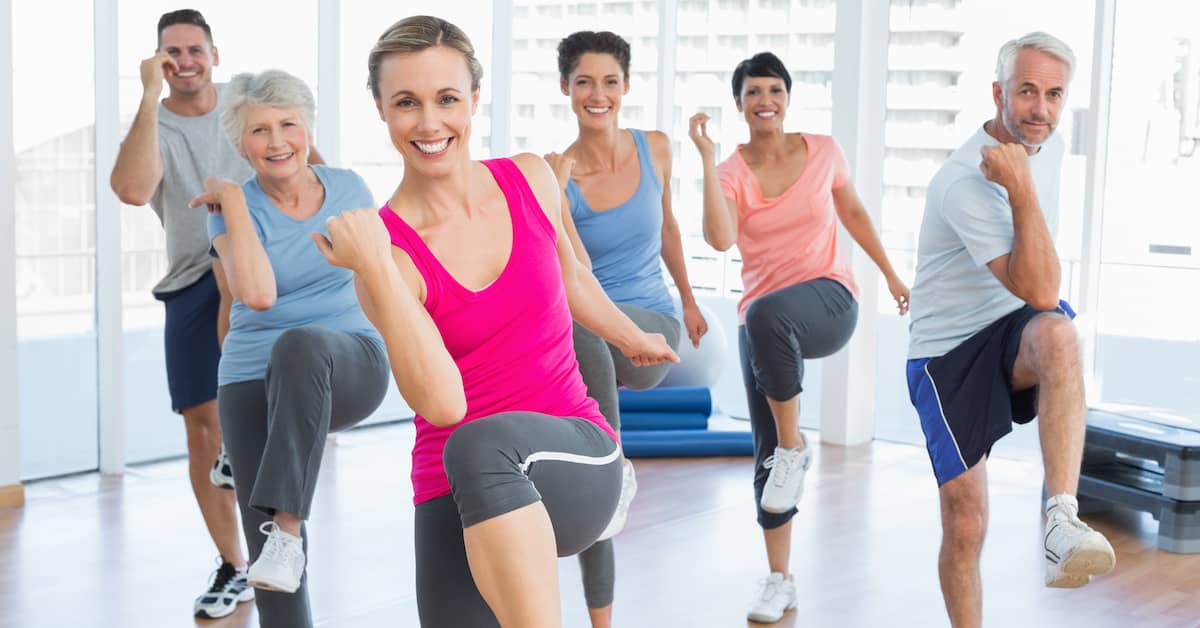
If you’re a regular reader of this site, you have read plenty regarding the health and longevity benefits of exercise. With that said, researchers are still searching for the best type of exercise to promote longevity.
Do you really need to jog for miles or can simple walking and household activities suffice? How long do you need to exercise? Two new studies attempt to uncover some answers. Let’s see what researchers are saying...
One study takes a look at the longevity benefits of walking. And researchers made an encouraging discovery: adding more steps to your day, whether all at once or in shorter bursts, can help you live longer.1
Taking a “Step” Towards a Longer Life
The American Heart Association advises that adults should aim for at least 150 minutes per week of moderate or 75 minutes of vigorous physical activity, or a combination of both.2
For most people, walking is one of the safest, easiest, and least expensive ways to improve health, particularly heart health. It’s also one of my favorite exercises.
With that in mind, researchers dug into data from 16,732 women who wore a waist step counter that measured their daily steps and walking patterns for four to seven days between 2011 and 2015.
The women, who were all over the age of 60 (average age 72), were participants in the Women’s Health Study, a large, national investigation into the prevention of heart disease, cancer and other diseases.
Researchers divided each woman’s activity into two segments: The first segment focused on ten-minute or longer periods of walking with few interruptions. The second segment recorded short bursts of walking during regular daily activities, such as housework, taking the stairs or walking the dog.
For the next six years, researchers tracked deaths from any cause. Overall, 804 women died during the study, which spanned eight years from 2011 to 2019.
Here are the key findings...
Walking of Any Kind Promotes Longevity
- Short periods of brisk walking increased longevity more than longer, uninterrupted strolls. Women who took more steps in shorter bursts during regular daily activities of living, lived longer. And it didn’t matter how many steps they logged in longer, uninterrupted walks, the shorter bursts appeared to be more beneficial. The benefits leveled off at about 4,500 daily brisk-walking steps, which is the equivalent of about two miles.
- Slow or fast-- walking reduces risk of death. Compared to no daily steps, each increase of 1,000 steps—or about half a mile— lowered risk of death from all causes by 28 percent.
- Walking a mile or more a day helps you live longer. Increasing steps from 1,000 to 2,000 or more during an uninterrupted walk edged up longevity rates for women in the study with a 32 percent reduction in death from all causes.
In other words, simply taking more steps per day, whether all at once or in shorter bursts, is a key to longevity. Each step counts – regardless of the duration. Sure, everyday walking regimens are great, but this research proves that you shouldn’t neglect daily opportunities to sneak in steps by seeking out distant parking spots, housework or yardwork.
Researchers presented these findings at this year’s American Heart Association’s Epidemiology, Prevention, Lifestyle & Cardiometabolic Health Conference.
But what about other exercises? And how long should you be exercising anyway?
Create the Perfect Exercise “Cocktail”
Researchers in a new study say promoting longevity is less about the exercise you choose and more about performing regular exercise to offset periods of daily inactivity.
In this investigation Columbia University researchers used data from six studies that included more than 130,000 adults in the United States, United Kingdom, and Sweden.3
Keith Diaz, PhD, director of the exercise-testing laboratory at the Center for Behavioral Cardiovascular Health at Columbia University, says for decades folks have been told that the recipe for good health is to get at least 30 minutes of exercise five days a week.
“But even if you’re one of the few adults who can stick to this advice, 30 minutes represents just two percent of your entire day,” Dr. Diaz says. “Is it really possible that our activity habits for just two percent of the day is all that matters when it comes to health?”
Dr. Diaz says it may not be as simple as checking off ‘exercise’ on your to-do list. Moving around and not remaining sedentary all day matters, too.
Lead researcher Sebastien Chastin, PhD, professor of health behavior dynamics at Glasgow Caledonian University in Scotland, concurs.
“Getting 30 minutes of physical activity per day, or 150 minutes per week, is what’s currently recommended,” he says, “but you still have the potential to undo all that good work if you sit too long.” Both researchers say it’s all about finding a healthy movement profile. In other words, finding the right balance of sedentary time and physical activity.
Try a 3-to-1 Exercise Cocktail
The research discovered that logging three minutes of moderate-to-vigorous activity or 12 minutes of light activity per hour of sitting was ideal for improving health and reducing the risk of early death.
Using this formula, the researchers came up with three activity combinations that, according to their science, can reduce the risk of early death by 30 percent.
1. 55 minutes of exercise, four hours of light physical activity, and 11 hours of sitting
2. 13 minutes of exercise, 5.5 hours of light physical activity, and 10.3 hours of sitting
3. Three minutes of exercise, six hours of light physical activity, and 9.7 hours of sitting
Dr. Diaz says it’s all about finding a balance.
“Our study shows that there is no one-size-fits-all approach to physical activity, and we get to choose which ones we like best,” he says. “It may be more important to mix a movement cocktail that includes a healthy dose of exercise and light activity to take the place of sitting.”
I think this is important advice. Never miss an opportunity to add more movement to your day as well as take the time to consider how much movement you need to counteract inactivity. Together, this can help you achieve real change in your health and fitness.
[/fusion_text][/fusion_builder_column][/fusion_builder_row][/fusion_builder_container]
